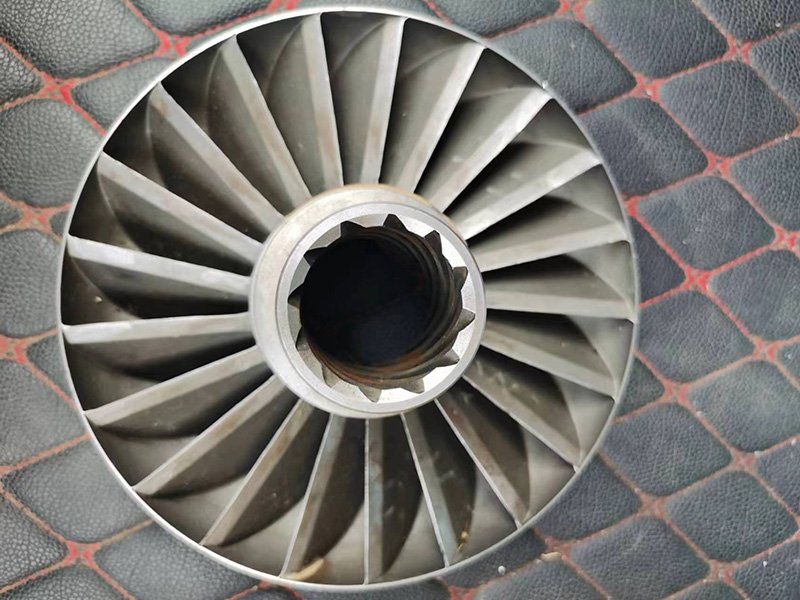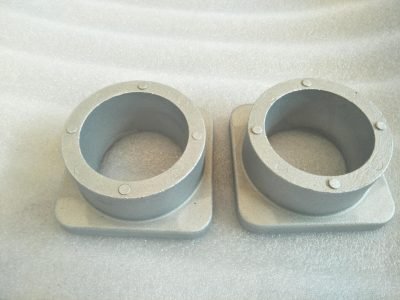can investment-cast 316 stainless steel be welded to stainless pipe

Investment casting, also known as precision casting, is a high-precision casting method that has been widely used in various industries. As a kind of high-quality stainless steel, 316 stainless steel has excellent corrosion resistance, heat resistance, and high strength. This article will discuss the feasibility of welding investment-cast 316 stainless steel to stainless pipe from a professional perspective.
I. Introduction to Investment Casting
Investment casting is a metal casting process that uses wax patterns to produce high-precision and complex-shaped metal parts. The wax pattern is usually made by CNC machine or hand carving. After the wax pattern is made, it is covered with ceramic shell material. The ceramic shell is then heated and melted, and the wax is melted and flowed out. The molten metal is poured into the ceramic shell, and after cooling and solidifying, the ceramic shell is broken, and the casting is obtained.
II. Properties of 316 Stainless Steel
316 stainless steel is a kind of austenitic stainless steel, which is widely used in various industries due to its excellent performance. The main properties of 316 stainless steel are as follows:
1. Excellent corrosion resistance: 316 stainless steel has good corrosion resistance in most environments, such as seawater, chloride-containing media, and other corrosive media.
2. Good heat resistance: 316 stainless steel has good thermal stability and can maintain its strength at high temperatures.
3. High strength: The tensile strength and yield strength of 316 stainless steel are relatively high, which can meet the requirements of high-load applications.
III. Welding of Investment-Cast 316 Stainless Steel
A. Welding Methods
1. Gas shielded arc welding (GMAW): GMAW is a commonly used welding method for stainless steel. It has good welding quality and can be used to weld 316 stainless steel.
2. Gas tungsten arc welding (GTAW): GTAW is a high-precision welding method, which can be used to weld thin-walled 316 stainless steel parts.
3. Flux cored arc welding (FCAW): FCAW is a high-efficiency welding method, which can be used to weld thick-walled 316 stainless steel parts.
B. Welding Precautions
1. Clean the surface of the 316 stainless steel and stainless pipe before welding to remove oil, rust, and other impurities.
2. Select the appropriate welding wire and welding parameters according to the thickness and requirements of the 316 stainless steel and stainless pipe.
3. Pay attention to the protection of the welding area to prevent oxidation and other phenomena.
4. Perform the welding process in a dry and clean environment to ensure the quality of the welding.
IV. Welding of Investment-Cast 316 Stainless Steel to Stainless Pipe
A. Advantages
1. High precision: The investment casting process can produce high-precision 316 stainless steel parts, which can ensure the fit of the parts.
2. Good quality: The welding of investment-cast 316 stainless steel to stainless pipe can ensure good welding quality and strength.
3. Low cost: The welding of investment-cast 316 stainless steel to stainless pipe can reduce the cost of parts processing.
B. Disadvantages
1. High requirements for welding technology: The welding of investment-cast 316 stainless steel to stainless pipe requires high welding technology and experience.
2. Limited applicability: The welding of investment-cast 316 stainless steel to stainless pipe is suitable for certain types of parts and applications.
V. Common Questions and Answers
1. Q: Can investment-cast 316 stainless steel be welded to stainless pipe?
A: Yes, investment-cast 316 stainless steel can be welded to stainless pipe, but it requires high welding technology and experience.
2. Q: What welding method is suitable for welding investment-cast 316 stainless steel to stainless pipe?
A: GMAW, GTAW, and FCAW are all suitable for welding investment-cast 316 stainless steel to stainless pipe. The selection of welding method should be based on the thickness and requirements of the parts.
3. Q: What are the main factors affecting the welding quality of investment-cast 316 stainless steel to stainless pipe?
A: The main factors affecting the welding quality include the welding method, welding parameters, and the cleanliness of the welding area.
4. Q: Is it necessary to perform post-weld heat treatment after welding investment-cast 316 stainless steel to stainless pipe?
A: It is necessary to perform post-weld heat treatment for some applications to improve the performance of the parts.
5. Q: What are the advantages and disadvantages of welding investment-cast 316 stainless steel to stainless pipe?
A: The advantages include high precision, good quality, and low cost. The disadvantages include high requirements for welding technology and limited applicability.
